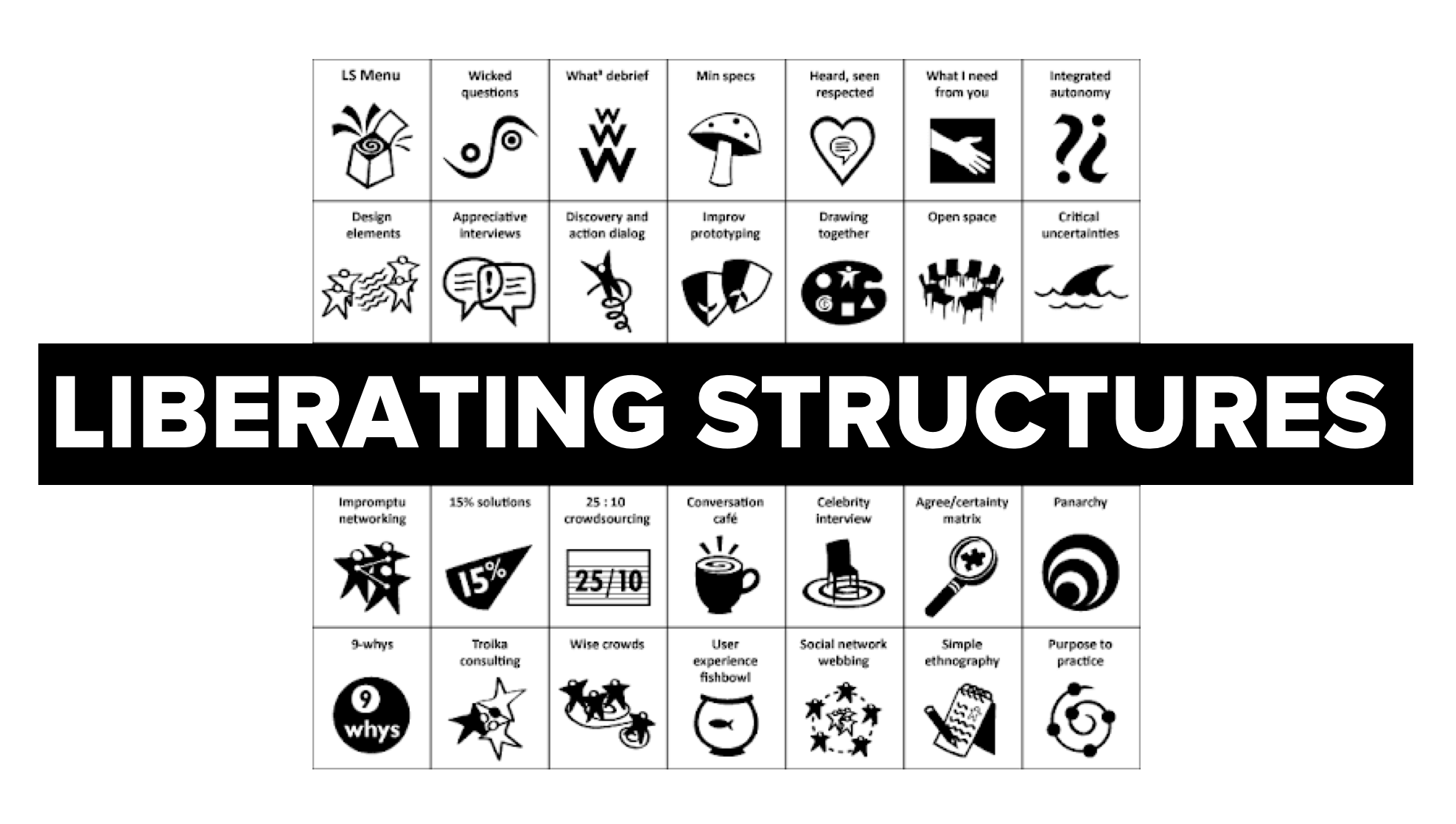Imagine you work for a company that wants to improve its processes. Despite numerous brainstorming sessions and team meetings, transformative ideas are unattainable. How could this be resolved? By implementing Liberating Structures!
Liberating Structures provides a set of dynamic methods that revitalize conventional thinking, generating new ideas and solutions to complex problems. These methods promote inclusive and vibrant group interactions, paving the way for active participation and collaborative problem solving.
Breaking the mould
With 33 different Liberating Structures, you have a powerful toolkit for guiding group discussions, fostering innovation, and facilitating decision-making. Embracing these structures allows teams to move beyond traditional thinking and create an environment conducive to collaboration. This environment encourages collective creativity, mutual trust, and the efficient pursuit of common goals.
In collaboration with specialists in fields like organizational development and complexity science, Henri Lipmanowicz and Keith McCandless created these transformative structures.
Core tenets
Liberating Structures seek to amplify every voice and foster collective innovation. They prioritize key aspects such as encouraging creativity, promoting self-management, and emphasizing experiential learning. Everyone contributes to a dynamic, inclusive, and results-oriented environment.

Diverse applications
Here’s a glance at some structures:
- 1-2-4-All: encourages group participation and idea sharing.
- Open Space Technology: enables unstructured, self-directed conversations.
- TRIZ: identifies contradictions to generate novel solutions.
- 15% Solutions: encourages identifying small but significant improvements.
- Shift & Share: offers a platform for exploring diverse perspectives and collective wisdom.
- Consent Decision Making: this ensures that decisions are inclusive and made quickly.
- Troika Consulting: promotes empathy and support among team members.
- Wise Crowds: leverages team intelligence to generate insights and ideas.
Empowering Scrum Masters
Scrum Masters play a pivotal role in guiding teams towards effective Agile practices and facilitating various team activities. Liberating Structures could provide Scrum Masters with an array of tools and techniques to facilitate team interactions, problem-solving, and decision-making in an inclusive and engaging manner. They help in transforming team dynamics, ensuring every voice is valued, and promoting a culture of continuous learning and improvement.
Scrum Masters typically lead activities such as Sprint Retrospectives and Sprint Planning. Liberating Structures provide a variety of formats to ensure that all voices are heard, fostering in-depth discussions. Overall, the use of Liberating Structures in Scrum environments can improve team interaction, creativity, and productivity by ensuring a structured but flexible approach to addressing team challenges and goals.
Some specific examples:
- 1-2-4-All: This Liberating Structure encourages collective thinking. Scrum Masters can ensure genuine and fruitful collaboration by involving everyone on the team.
- TRIZ: When complex issues arise during sprints, this structure assists teams in identifying contradictions and developing innovative solutions, allowing Scrum Masters to effectively guide their teams through challenges.
- Open Space Technology: This approach promotes more self-directed and free-form discussions, ensuring that even the most reserved team members participate actively.
- Consent Decision Making: Making unanimously agreed-upon decisions can be difficult. This structure enables Scrum Masters to promote more inclusive and efficient decision-making processes.
- Troika Consulting: This technique promotes empathy and mutual support among team members. Scrum Masters can use this to improve team cohesion by implementing and reinforcing empathetic activities.
- 15% Solutions: This structure encourages teams to identify small, actionable improvements, allowing Scrum Masters to drive continuous growth without overwhelming their teams.
- Wise Crowds: Using this and similar structures, Scrum Masters can tap into the team’s collective intelligence, allowing for the collection of a wide range of insights and ideas.
